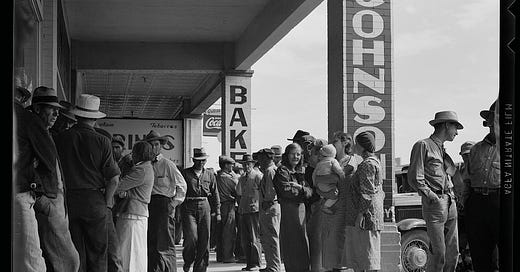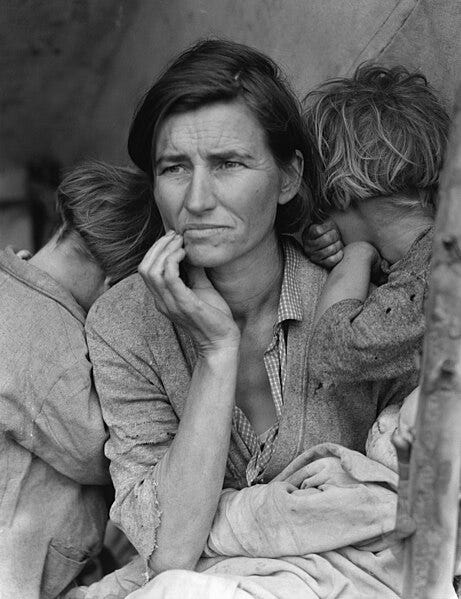Dorothea Lange: Part III
Please note: this story continues Part I & Part II.
Dorothea Lange: Part I
It was March 1936, and the U.S. was in the throes of a struggle that seemed never-ending. The Great Depression was ravaging the land, and in the Midwest, dust storms were also sweeping across the plains, forcing tens of thousands from their homes and driving them to seek refuge where they could. Some piled their few belongings into rusted-out cars and b…
Dorothea Lange: Part II
Dorothea Lange was born on a late spring day, May 26, 1895, in Hoboken, New Jersey. Growing up there, she encountered two challenges early in life that left a lasting imprint on her. At the age of seven, Dorothea contracted polio. While she survived the disease, it left her with a permanent limp. Along with the physical ailment came the taunting. Children, as they sometimes do, seized on her difference and nicknamed Dorothea "limpy." It was a cruel reminder of her struggle. Even her mother would sometimes make Dorothea feel bad about how she walked. In later years, when reflecting on the long shadow polio cast over her life, Dorothea spoke of it as both a tragedy and a defining force.
Dorothea Lange: Part III
"I really and seriously tried, with every person I photographed, to reveal them as closely as I could." - Dorothea Lange
Dorothea wasted no time dwelling on her misfortunes. The day after being robbed, she began calling around for photofinishing work, confident someone would need her talent and experience. She was right. By the end of that day, Dorothea had found a job at a department store photofinishing counter.
With a steady income secure, Dorothea focused on building a life in San Francisco. She didn't realize so then, but fate had stuck her in a place uniquely suited to nurture her ambitions. The community of artists was beloved in the city, and Dorothea thrived as she joined the San Francisco Camera Club.
Being part of the community quickly led to two significant life changes for Dorothea. The first was meeting a wealthy man in the Camera Club, who encouraged her to open a studio. He loaned the money, and in 1919, after a year in San Francisco, Dorothea took the bold move to start an entrepreneurial life. The decision was a great success as the studio flourished. And her clientele, particularly among the city's wealthy Jewish families, provided financial stability and a subtle connection to her own early school years on the East Coast.
The second meaningful change came in 1920 when she married Maynard Dixon, a celebrated painter of the American West. In the ensuing years, Dorothea and Maynard had their first son. And in 1928, they had their second. Now, Dorothea had to balance the demands of life as a wife, mother, and entrepreneur. It was no easy task, especially in an era that imposed strict expectations on women. "I had a family to hold together, and little boys to rear without disturbing Maynard too much, though he was very good to us," she said. Ever resourceful, she found a way to manage, continuing to build her business even as her personal life grew more complex.
But then came the Great Depression in 1929, unsettling everything. As the economic landscape shifted, so too did the fortunes of Dorothea's family. Though more fortunate than many, the family was not immune to the economic devastation sweeping the country. They sent the boys to boarding school and separately moved into their respective studios — an arrangement that, though driven by financial constraints, also reflected what was likely becoming a growing personal distance. Dorothea, looking back years later, confessed the emotional toll. "This was very, very hard for me to do. Even now when I speak of it I feel the pain. I carry these things inside and it hurts me in the same spot that it did then."





